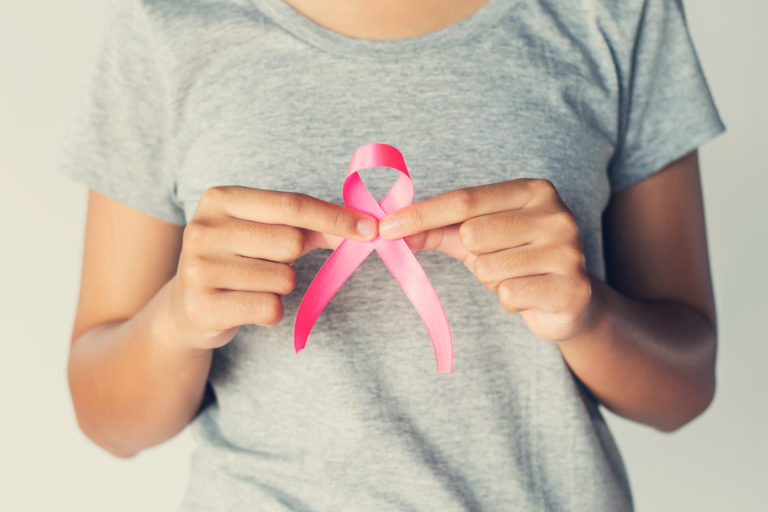It’s no secret that cancer rates have been on the rise for quite some time now. That’s especially the case with female-centered cancers, like breast and cervical cancers. A cancer diagnosis can definitely change your family plans, and some forms of cancer treatment can carry serious considerations for your fertility. Whether you’re reeling from a cancer diagnosis or hoping to lower your cancer risks, we hope that the information below can provide education on issues where cancer, fertility, and family planning concerns overlap.
Birth control and cancer risks
You may have heard that hormonal birth control (HBC) slightly increases your risk of breast cancer (it increases whatever your personal risk is by about 20%) but decreases your risk of ovarian cancer and endometrial or uterine cancer. How are cancer and hormonal birth control connected? And do decreased risks of certain cancers outweigh the increased risks of breast cancer and cervical cancer for HBC users?
Proper informed consent between doctor and patient is essential to patients feeling prepared for whatever risks may come from the drugs they decide to take. Unfortunately, too often women who suffer birth control side effects, including cancer, say they didn’t hear these risks mentioned by their doctor.
References
Click a subtopic below to view scientific references for each of the following cancers and their connections to birth control use.
Adams-Campbell LL, Makambi KH, Frederick WA, Gaskins M, Dewitty RL, and McCaskill-Stevens W. Breast cancer risk assessments comparing Gail and CARE models in African-American women. Breast J. 15 Suppl 2009; 1:S72–75.
Alipour S, Omranipour R, Malekzadeh R, Poustchi H, Pourshams A, Khoshnia M, Gharavi A, Roshandel G, Eslami B. A Case-Control Study of Breast Cancer in Northeast of Iran: The Golestan Cohort Study. Arch Iran Med. 2019 Jul 1;22(7):355-360.
Alonso-Molero J, Gómez-Acebo I, Llorca J, Lope-Carvajal V, Amiano P, Guevara M, Martín V, Castaño-Vinyals G, Fernández-Ortiz M, Obón-Santacana M, Alguacil J, Fernandez-Tardon G, Molina-Barceló A, Marcos-Gragera R, Pérez-Gómez B, Aizpurua A, Ardanaz E, Molina AJ, Rodríguez-Cundín P, Moreno V, Rodríguez-Reinado C, Aragonés N, Kogevinas M, Pollán M, Dierssen-Sotos T. Effect of the use of prediagnosis hormones on breast cancer prognosis: MCC-Spain study. Menopause. 2022 Nov 1;29(11):1315-1322.
Amadou A, Fabre A, Torres-Mejía G, Ortega-Olvera C, Angeles-Llerenas A, McKenzie F, Biessy C, Hainaut P, and Romieu I. Hormonal therapy and risk of breast cancer in Mexican women. PLoS One 2013; 8:e79695.
Barańska A, Kanadys W. Oral Contraceptive Use and Breast Cancer Risk for BRCA1 and BRCA2 Mutation Carriers: Systematic Review and Meta-Analysis of Case-Control Studies. Cancers (Basel). 2022 Sep 29;14(19):4774.
Beaber EF, Buist DS, Barlow WE, Malone KE, Reed SD, and Li CI. Recent oral contraceptive use by formulation and breast cancer risk among women 20 to 49 years of age. Cancer Res 2014a; 74:4078–4089.
Beaber EF, Malone KE, Tang MT, Barlow WE, Porter PL, Daling JR, and Li CI. Oral contraceptives and breast cancer risk overall and by molecular subtype among young women. Cancer Epidemiol Biomarkers Prev 2014b; 23:755–764.
Beji NK and Reis N. Risk factors for breast cancer in Turkish women: a hospital-based case-control study. Eur J Cancer Care (Engl). 2007; 16:178–184.
Bethea TN, Rosenberg L, Hong CC, Troester MA, Lunetta KL, Bandera EV, Schedin P, Kolonel LN, Olshan AF, Ambrosone CB, and Palmer JR. A case-control analysis of oral contraceptive use and breast cancer subtypes in the African American Breast Cancer Epidemiology and Risk Consortium. Breast Cancer Res 2015; 17:22. Doi: 10.1186/s13058-015-0535-x.
Bhadoria AS, Kapil U, Sareen N, Singh P. Reproductive factors and breast cancer: a case-control study in tertiary care hospital of North India. Indian J Cancer. 2013 Oct-Dec;50(4):316-21.
Brohet RM, Goldgar DE, Easton DF, Antoniou AC, Andrieu N, Chang-Claude J, Peock S, Eeles RA, Cook M, Chu C, Noguès C, Lasset C, Berthet P, Meijers-Heijboer H, Gerdes AM, Olsson H, Caldes T, van Leeuwen FE, and Rookus MA. Oral contraceptives and breast cancer risk in the international BRCA1/2 carrier cohort study: a report from EMBRACE, GENEPSO, GEO-HEBON, and the IBCCS Collaborating Group. J Clin Oncol 2007; 25:3831–3836.
Conz L, Mota BS, Bahamondes L, Teixeira Dória M, Françoise Mauricette Derchain S, Rieira R, Sarian LO. Levonorgestrel-releasing intrauterine system and breast cancer risk: A systematic review and meta-analysis. Acta Obstet Gynecol Scand. 2020 Aug;99(8):970-982.
Das S, Sen S, Mukherjee A, Chakraborty D, Mondal PK. Risk factors of breast cancer among women in eastern India: a tertiary hospital based case control study. Asian Pac J Cancer Prev. 2012;13(10):4979-81.
Delort L, Kwiatkowski F, Chalabi N, Satih S, Bignon YJ, and Bernard-Gallon DJ. Risk factors for early age at breast cancer onset—the “COSA program” population-based study. Anticancer Res 2007; 27:1087–1094.
Dey S, Boffetta P, Mathews A, Brennan P, Soliman A, Mathew A. Risk factors according to estrogen receptor status of breast cancer patients in Trivandrum, South India. Int J Cancer. 2009 Oct 1;125(7):1663-70.
Dolle JM, Daling JR, White E, Brinton LA, Doody DR, Porter PL, and Malone KE. Risk factors for triple-negative breast cancer in women under the age of 45 years. Cancer Epidemiol Biomarkers Prev 2009; 18:1157–1166.
Fehring Perri T, Naor-Revel S, Eliassi-Revivo P, Lifshitz D, Friedman E, Korach J. Fertility treatments and breast cancer risk in Jewish Israeli BRCA mutation carriers. Fertil Steril. 2021 Aug;116(2):538-545.
Figueiredo JC, Haile RW, Bernstein L, Malone KE, Largent J, Langholz B, Lynch CF, Bertelsen L, Capanu M, Concannon P, Borg A, Børresen-Dale AL, Diep A, Teraoka S, Torngren T, Xue S, and Bernstein JL. Oral contraceptives and postmenopausal hormones and risk of contralateral breast cancer among BRCA1 and BRCA2 mutation carriers and noncarriers: the WECARE Study. Breast Cancer Res Treat 2010; 120:175–183.
Folger SG, Marchbanks PA, McDonald JA, Bernstein L, Ursin G, Berlin JA, Daling JR, Norman SA, Strom BL, Weiss LK, Simon MS, Burkman RT, Malone KE, and Spirtas R. Risk of breast cancer associated with short-term use of oral contraceptives. Cancer Causes Control 2007; 18:189–198.
Friebel TM, Domchek SM, and Rebbeck TR. Modifiers of cancer risk in BRCA1 and BRCA2 mutation carriers: systematic review and meta-analysis. J Natl Cancer Inst 2014; 106(6):dju091. Doi: 10.1093/jnci/dju091.
Haile RW, Thomas DC, McGuire V, Felberg A, John EM, Milne RL, Hopper JL, Jenkins MA, Levine AJ, Daly MM, Buys SS, Senie RT, Andrulis IL, Knight JA, Godwin AK, Southey M, McCredie MR, Giles GG, Andrews L, Tucker K, Miron A, Apicella C, Tesoriero A, Bane A, Pike MC; kConFab Investigators; Ontario Cancer Genetics Network Investigators, and Whittemore AS. BRCA1 and BRCA2 mutation carriers, oral contraceptive use, and breast cancer before age 50. Cancer Epidemiol Biomarkers Prev 2006; 15:1863–1870.
Heikkinen S, Koskenvuo M, Malila N, Sarkeala T, Pukkala E, and Pitkäniemi J. Use of exogenous hormones and the risk of breast cancer: results from self-reported survey data with validity assessment. Cancer Causes Control 2016; 27:249–258.
Hunter DJ, Colditz GA, Hankinson SE, Malspeis S, Spiegelman D, Chen W, Stampfer MJ, and Willett WC. Oral contraceptive use and breast cancer: a prospective study of young women. Cancer Epidemiol Biomarkers Prev 2010; 19:2496–2502.
Ichida M, Kataoka A, Tsushima R, and Taguchi T. No increase in breast cancer risk in Japanese women taking oral contraceptives: a case-control study investigating reproductive, menstrual and familial risk factors for breast cancer. Asian Pac J Cancer Prev 2015; 16:3685–3690.
Jernström H, Loman N, Johannsson OT, Borg A, and Olsson H. Impact of teenage oral contraceptive use in a population-based series of early-onset breast cancer cases who have undergone BRCA mutation testing. Eur J Cancer 2005; 41:2312–2320.
Ji LW, Jing CX, Zhuang SL, Pan WC, Hu XP. Effect of age at first use of oral contraceptives on breast cancer risk: An updated meta-analysis. Medicine (Baltimore). 2019 Sep;98(36):e15719.
Kahlenborn C, Modugno F, Potter DM, and Severs WB. Oral Contraceptive Use as a Risk Factor for Premenopausal Breast Cancer: A Meta-analysis. Mayo Clin Proc 2006; 81:1290–1302.
Kamath R, Mahajan KS, Ashok L, Sanal TS. A study on risk factors of breast cancer among patients attending the tertiary care hospital, in udupi district. Indian J Community Med. 2013 Apr;38(2):95-9.
Khoramdad M, Solaymani-Dodaran M, Kabir A, Ghahremanzadeh N, Hashemi EO, Fahimfar N, Omidi Z, Mansournia MA, Olfatbakh A, Salehiniya H, Haghighat S. Breast cancer risk factors in Iranian women: a systematic review and meta-analysis of matched case-control studies. Eur J Med Res. 2022 Dec 27;27(1):311.
Kotsopoulos J, Lubinski J, Moller P, Lynch HT, Singer CF, Eng C, Neuhausen SL, Karlan B, Kim-Sing C, Huzarski T, Gronwald J, McCuaig J, Senter L, Tung N, Ghadirian P, Eisen A, Gilchrist D, Blum JL, Zakalik D, Pal T, Sun P, and Narod SA; Hereditary Breast Cancer Clinical Study Group. Timing of oral contraceptive use and the risk of breast cancer in BRCA1 mutation carriers. Breast Cancer Res Treat 2014; 143:579–586.
Lee E, Ma H, McKean-Cowdin R, Van Den Berg D, Bernstein L, Henderson BE, and Ursin G. Effect of reproductive factors and oral contraceptives on breast cancer risk in BRCA1/2 mutation carriers and noncarriers: results from a population-based study. Cancer Epidemiol Biomarkers Prev 2008; 17:3170–3178.
Li CI, Beaber EF, Tang MT, Porter PL, Daling JR, and Malone KE. Effect of depo-medroxyprogesterone acetate on breast cancer risk among women 20 to 44 years of age. Cancer Res 2012; 72:2028–2035.
Liu H, Shi S, Gao J, Guo J, Li M, Wang L. Analysis of risk factors associated with breast cancer in women: a systematic review and meta-analysis. Transl Cancer Res. 2022 May;11(5):1344-1353.
Lodha R, Joshi A, Paul D, Lodha KM, Nahar N, Shrivastava A, Bhagat VK, Nandeshwar S. Association between reproductive factors and breast cancer in an urban set up at central India: a case-control study. Indian J Cancer. 2011 Jul-Sep;48(3):303-7.
Lumachi F, Frigo AC, Basso U, Tombolan V, and Ermani M. Estrogen therapy and risk of breast cancer in postmenopausal women: a case-control study and results of a multivariate analysis. Menopause 2010; 17:524–528.
Lund E, Bakken K, Dumeaux V, Andersen V, and Kumle M. Hormone replacement therapy and breast cancer in former users of oral contraceptives–The Norwegian Women and Cancer study. Int J Cancer 2007; 121:645–648.
Ma H, Bernstein L, Ross RK, and Ursin G. Hormone-related risk factors for breast cancer in women under age 50 years by estrogen and progesterone receptor status: results from a case-control and a case-case comparison. Breast Cancer Res 2006; 8:R39.
Ma H, Wang Y, Sullivan-Halley J, Weiss L, Marchbanks PA, Spirtas R, Ursin G, Burkman RT, Simon MS, Malone KE, Strom BL, McDonald JA, Press MF, and Bernstein L. Use of four biomarkers to evaluate the risk of breast cancer subtypes in the women’s contraceptive and reproductive experiences study. Cancer Res 2010; 70:575–587.
Maurya AP, Brahmachari S. Association of hormonal and reproductive risk factors with breast cancer in Indian women: A systematic review of case-control studies. Indian J Cancer. 2022 Oct 12. doi: 10.4103/ijc.IJC_271_21. Epub ahead of print.
Mehrgou A and Akouchekian M. The importance of BRCA1 and BRCA2 genes mutations in breast cancer development. Med J Islam Repub Iran 2016; 30:369.
Milne RL, Knight JA, John EM, Dite GS, Balbuena R, Ziogas A, Andrulis IL, West DW, Li FP, Southey MC, Giles GG, McCredie MR, Hopper JL, and Whittemore AS. Oral contraceptive use and risk of early-onset breast cancer in carriers and noncarriers of BRCA1 and BRCA2 mutations. Cancer Epidemiol Biomarkers Prev 2005; 14:350–356.
Moorman PG, Havrilesky LJ, Gierisch JM, Coeytaux RR, Lowery WJ, Peragallo Urrutia R, Dinan M, McBroom AJ, Hasselblad V, Sanders GD, and Myers ER. Oral contraceptives and risk of ovarian cancer and breast cancer among high-risk women: a systematic review and meta-analysis. J Clin Oncol 2013;31(33): 4188–4198. Doi: 10.1200/JCO.2013.48.9021.
Moradinazar M, Marzbani B, Shahebrahimi K, Shahabadi S, Marzbani B, Moradinazar Z. Hormone Therapy and Factors Affecting Fertility of Women Under 50-Year-Old with Breast Cancer. Breast Cancer (Dove Med Press). 2019 Dec 27;11:309-319.
Mørch LS, Skovlund CW, Hannaford PC, Iversen L, Fielding S, and Lidegaard Ø. Contemporary hormonal contraception and the risk of breast cancer. N Engl J Med 2017; 377:2228–2239.
Niemeyer Hultstrand J, Gemzell-Danielsson K, Kallner HK, Lindman H, Wikman P, Sundström-Poromaa I. Hormonal contraception and risk of breast cancer and breast cancer in situ among Swedish women 15-34 years of age: A nationwide register-based study. Lancet Reg Health Eur. 2022 Jul 29;21:100470.
Ozmen V, Ozcinar B, Karanlik H, Cabioglu N, Tukenmez M, Disci R, Ozmen T, Igci A, Muslumanoglu M, Kecer M, and Soran A. Breast cancer risk factors in Turkish women—a University Hospital based nested case control study. World J Surg Oncol 2009; 7:37.
Pakseresht S, Ingle GK, Bahadur AK, Ramteke VK, Singh MM, Garg S, Agarwal PN. Risk factors with breast cancer among women in Delhi. Indian J Cancer. 2009 Apr-Jun;46(2):132-8.
Parkin DM. Cancers attributable to exposure to hormones in the UK in 2010. British Journal of Cancer 2011; 105: S42–S48.
Phipps AI, Chlebowski RT, Prentice R, McTiernan A, Wactawski-Wende J, Kuller LH, Adams-Campbell LL, Lane D, Stefanick ML, Vitolins M, Kabat GC, Rohan TE, and Li CI. Reproductive history and oral contraceptive use in relation to risk of triple-negative breast cancer. J Natl Cancer Inst 2011; 103:470–477.
Poosari A, Promthet S, Kamsa-ard S, Suwanrungruang K, Longkul J, and Wiangnon S. Hormonal contraceptive use and breast cancer in Thai women. J Epidemiol 2014; 24:216–220.
Rosenberg L, Boggs DA, Wise LA, Adams-Campbell LL, and Palmer JR. Oral contraceptive use and estrogen/progesterone receptor-negative breast cancer among African American women. Cancer Epidemiol Biomarkers Prev 2010; 19:2073–2079.
Rosenberg L, Zhang Y, Coogan PF, Strom BL, and Palmer JR. A case-control study of oral contraceptive use and incident breast cancer. Am J Epidemiol 2008; 169:473–479.
Saleh B, Elhawary MA, Mohamed ME, Ali IN, El Zayat MS, Mohamed H. Gail model utilization in predicting breast cancer risk in Egyptian women: a cross-sectional study. Breast Cancer Res Treat. 2021 Aug;188(3):749-758.
Samson ME, Adams SA, Mulatya CM, Zhang J, Bennett CL, Hebert J, and Steck SE. Types of oral contraceptives and breast cancer survival among women enrolled in Medicaid: A competing-risk model. Maturitas 2017; 95:42–49.
Silvera SA, Miller AB, and Rohan TE. Oral contraceptive use and risk of breast cancer among women with a family history of breast cancer: a prospective cohort study. Cancer Causes Control. 2005; 16:1059–1063.
Simonsson M, Björner S, Markkula A, Nodin B, Jirström K, Rose C, Borgquist S, Ingvar C, Jernström H. The prognostic impact of COX-2 expression in breast cancer depends on oral contraceptive history, preoperative NSAID use, and tumor size. Int J Cancer. 2017 Jan 1;140(1):163-175.
Soini T, Hurskainen R, Grénman S, Mäenpää J, Paavonen J, and Pukkala E. Cancer risk in women using the levonorgestrel-releasing intrauterine system in Finland. Obstet Gynecol 2014; 124 (2 Pt 1): 292–299.
Sweeney C, Giuliano AR, Baumgartner KB, Byers T, Herrick JS, Edwards SL, and Slattery ML. Oral, injected and implanted contraceptives and breast cancer risk among U.S. Hispanic and non-Hispanic white women. Int J Cancer 2007; 121:2517–2523.
Thorbjarnardottir T, Olafsdottir EJ, Valdimarsdottir UA, Olafsson O, and Tryggvadottir L. Oral contraceptives, hormone replacement therapy and breast cancer risk: a cohort study of 16 928 women 48 years and older. Acta Oncol 2014; 53:752–758.
Trivers KF, Gammon MD, Abrahamson PE, Lund MJ, Flagg EW, Moorman PG, Kaufman JS, Cai J, Porter PL, Brinton LA, Eley JW, and Coates RJ. Oral contraceptives and survival in breast cancer patients aged 20 to 54 years. Cancer Epidemiol Biomarkers Prev 2007; 16:1822–1827.
Trivers KF, Gammon MD, Abrahamson PE, Lund MJ, Flagg EW, Moorman PG, Kaufman JS, Cai J, Porter PL, Brinton LA, Eley JW, Coates RJ. Oral contraceptives and survival in breast cancer patients aged 20 to 54 years. Cancer Epidemiol Biomarkers Prev. 2007 Sep;16(9):1822-7.
van Bommel MHD, IntHout J, Veldmate G, Kets CM, de Hullu JA, van Altena AM, Harmsen MG. Contraceptives and cancer risks in BRCA1/2 pathogenic variant carriers: a systematic review and meta-analysis. Hum Reprod Update. 2023 Mar 1;29(2):197-217.
Veisy A, Lotfinejad S, Salehi K, and Zhian F. Risk of breast cancer in relation to reproductive factors in North-West of Iran, 2013-2014. Asian Pac J Cancer Prev 2015; 16:451–455.
Veneroso C, Siegel R, and Levine PH. Early age at first childbirth associated with advanced tumor grade in breast cancer. Cancer Detect Prev 2008; 32:215–223.
Von Elm E, Altman DG, Egger M, Pocock SJ, Gøtzsche PC, Vandenbroucke JP; STROBE Initiative. The Strengthening the Reporting of Observational Studies in Epidemiology (STROBE) Statement: Guidelines for reporting observational studies. PLoS Medicine 2007; 4:1623–27 (e296). Doi: 10.1371/journal.pmed. 0040296.
Vyver E, Hwang LY. A paediatric perspective on hormonal contraception and breast cancer risk: New literature about a recurring question. Paediatr Child Health. 2019 Jul;24(4):224-226.
Williams WV, Carlson K, Mitchell LA, and Raviele K. Association of Combined Estrogen-Progestogen and Progestogen Only Contraceptives with the Development of Cancer. The Linacre Quarterly 2018; 85(4): 412–452.
World Health Organization International Agency for Research on Cancer. IARC Monographs on the Evaluation of Carcinogenic Risk to Humans. Combined Estrogen−Progestogen Contraceptives and Combined Estrogen−Progestogen Menopausal Therapy. 2007; http://monographs.iarc.fr/ENG/Monographs/vol91/mono91.pdf.
World Health Organization International Agency for Research on Cancer. IARC Monographs on the Evaluation of Carcinogenic Risk to Humans. Combined Estrogen−Progestogen Contraceptives. IARC Monographs 2012; 100A:283–318; http://monographs.iarc.fr/ENG/Monographs/vol100A/mono100A-19.pdf.
Yager JD and Davidson NE. Estrogen Carcinogenesis in Breast Cancer. N Engl J Med 2006; 354:270-282.
Yuan X, Yi F, Hou C, Lee H, Zhong X, Tao P, Li H, Xu Z, Li J. Induced Abortion, Birth Control Methods, and Breast Cancer Risk: A Case-Control Study in China. J Epidemiol. 2019 May 5;29(5):173-179.
Zhu H, Lei X, Feng J, and Wang Y. Oral contraceptive use and risk of breast cancer: a meta-analysis of prospective cohort studies. Eur J Contracept Reprod Health Care 2012; 17:402–414.
Anastasiou,E., McCarthy, K.J., Gollub, E.L., Ralph,L., van de Wijgert, J.,Jones, H.E.(2022) “The relationship between hormonal contraception and cervical dysplasia/cancer controlling for human papillomavirus infection: a systematic review.” Contraception. 2022 March; 107: 1–9. doi:10.1016/j.contraception.2021.10.018.
Asadi, F., Salehnasab, C., Ajori, L. (2020) “Supervised Algorithms of Machine Learning for the Prediction of Cervical Cancer.” J Biomed Phys Eng 2020; 10(4)
Asthana S, Busa V, Labani S.(2020) Oral contraceptives use and risk of cervical cancer-A systematic review & meta-analysis. Eur J Obstet Gynecol Reprod Biol. Apr;247:163-175. doi: 10.1016/j.ejogrb.2020.02.014. Epub 2020 Feb 21. PMID: 32114321.
International Collaboration of Epidemiological Studies of Cervical Cancer, Appleby P, Beral V, Berrington de González A, Colin D, Franceschi S, Goodhill A, Green J, Peto J, Plummer M, and Sweetland S. Cervical cancer and hormonal contraceptives: collaborative reanalysis of individual data for 16,573 women with cervical cancer and 35,509 women without cervical cancer from 24 epidemiological studies. Lancet 2007; 370:1609–1621.
Iversen et al (2020) “Contemporary hormonal contraception and cervical cancer in women of reproductive age” Int. J. Cancer. 2021;149:769–777. DOI: 10.1002/ijc.33585
Kusmiyat,Y., Prasistyami,A., Wahyuningsih, HP., Widyasih H.,Adnani, QES.(2019) “Duration of Hormonal Contraception and Risk of Cervical Cancer.” Kesmas: National Public Health Journal. 2019; 14 (1): 9-13 DOI:10.21109/kesmas.v14i1.2713
Leslie HH, Karasek DA, Harris LF, Chang E, Abdulrahim N, Maloba M, and Huchko MJ. Cervical cancer precursors and hormonal contraceptive use in HIV-positive women: application of a causal model and semi-parametric estimation methods. PLoS One 2014; 9:e101090.
Loopik,DL., IntHout, J., Melchers,WJG., Massuger, LFAG, Bekkers, RLM., Siebers, AG. (2020) “Oral contraceptive and intrauterine device use and the risk of cervical intraepithelial neoplasia grade III or worse: a population-based study” European Journal of Cancer 124 (2020) 102e109
Matos A, Moutinho J, Pinto D, and Medeiros R. The influence of smoking and other cofactors on the time to onset to cervical cancer in a southern European population. Eur J Cancer Prev 2005; 14:485–491.
McFarlane-Anderson N, Bazuaye PE, Jackson MD, Smikle M, and Fletcher HM. Cervical dysplasia and cancer and the use of hormonal contraceptives in Jamaican women. BMC Womens Health 2008; 8:9.
Moreno V, Bosch FX, Muñoz N, Meijer CJ, Shah KV, Walboomers JM, Herrero R, Franceschi S; International Agency for Research on Cancer. Multicentric Cervical Cancer Study Group. Effect of oral contraceptives on risk of cervical cancer in women with human papillomavirus infection: the IARC multicentric case-control study. Lancet 2002; 359(9312):1085–1092.
Roura E, Travier N, Waterboer T, de Sanjosé S, Bosch FX, Pawlita M, Pala V, Weiderpass E, Margall N, Dillner J, Gram IT, Tjønneland A, Munk C, Palli D, Khaw KT, Overvad K, Clavel-Chapelon F, Mesrine S, Fournier A, Fortner RT, Ose J, Steffen A, Trichopoulou A, Lagiou P, Orfanos P, Masala G, Tumino R, Sacerdote C, Polidoro S, Mattiello A, Lund E, Peeters PH, Bueno-de-Mesquita HB, Quirós JR, Sánchez MJ, Navarro C, Barricarte A, Larrañaga N, Ekström J, Lindquist D, Idahl A, Travis RC, Merritt MA, Gunter MJ, Rinaldi S, Tommasino M, Franceschi S, Riboli E, and Castellsagué X. The Influence of Hormonal Factors on the Risk of Developing Cervical Cancer and Pre-Cancer: Results from the EPIC Cohort. PLoS One 2016; 11:e0147029.
Singini MG, Sitas F, Bradshaw D, Chen, WC, Motlhale M, Kamiza AB, et al. (2021) “Ranking lifestyle risk factors for cervical cancer among Black women: A case-control study from Johannesburg, South Africa.” PLoS ONE 16(12):e0260319. https://doi.org/10.1371/journal.pone.0260319
Spotnitz, ME, Natarajan, K, Ryan, PB, Westhoff, CL. (2020) “Relative Risk of Cervical Neoplasms Among Copper and Levonorgestrel-Releasing Intrauterine System Users.” Obstet Gynecol ;135:319–27 DOI: 10.1097/AOG.0000000000003656
Sun L, Yang L, Liu X, Tang L, Zeng Q, Gao Y, Chen Q, Liu Z and Peng B (2022) “Optimization of Cervical Cancer Screening: A Stacking-Integrated Machine Learning Algorithm Based on Demographic, Behavioral, and Clinical Factors.” Front. Oncol. 12:821453. doi: 10.3389/fonc.2022.821453
Vanakankovit N and Taneepanichskul S. Effect of oral contraceptives on risk of cervical cancer. J Med Assoc Thai 2008; 91:7–12.
Wilson JC, O’Rorke MA, Cooper JA, Murray LJ, Hughes CM, Gormley GJ, and Anderson LA. Non-steroidal anti-inflammatory drug use and cervical cancer risk: a case-control study using the Clinical Practice Research Datalink. Cancer Epidemiol 2013; 37:897–904.
World Health Organization International Agency for Research on Cancer. IARC Monographs on the Evaluation of Carcinogenic Risk to Humans. Combined Estrogen−Progestogen Contraceptives and Combined Estrogen−Progestogen Menopausal Therapy. 2007; http://monographs.iarc.fr/ENG/Monographs/vol91/mono91.pdf.
World Health Organization International Agency for Research on Cancer. IARC Monographs on the Evaluation of Carcinogenic Risk to Humans. Combined Estrogen−Progestogen Contraceptives. IARC Monographs 2012; 100A:283–318; http://monographs.iarc.fr/ENG/Monographs/vol100A/mono100A-19.pdf.
This page was last updated on April 26, 2024.
For more information on cancer, see the articles below.
-

Liver tumors are the hormonal birth control side effect you’ve probably never heard of
By Alex Rico • January 11, 2024Birth control users are at risk even if they’re otherwise healthy -

Birth control and cervical cancer: What’s the link?
By Kristen Curran • January 4, 2024HPV is the #1 sexually transmitted infection worldwide -

Study: Menstrual disturbances in female cancer patients often go unaddressed
By Anne Marie Williams, RN, BSN • September 8, 2023At Natural Womanhood, we frequently reference the menstrual cycle’s significance as a “fifth vital sign,” especially— according to… -

Vaginal cancer: What causes it, and could you be at risk?
By Clare Sharp • August 10, 2023For most people in the United States, cancer is a common experience, either through personal diagnosis or that… -

Study: Children born after common fertility treatment may have heightened cancer risk
By Christina Bennett • November 25, 2022Cancer is one of the leading causes of death for children, and while researchers are still striving to… -

How birth control, pregnancy, and abortion each impact a woman’s breast cancer risk
By Christina Bennett • April 8, 2022Given that one in eight women receive a devastating breast cancer diagnosis in their lifetime, virtually all women—myself included—want to… -

Does birth control prevent—or cause—cancer?
By Christina Bennett • March 18, 2022Here’s how hormonal birth control impacts your risk of breast, cervical, endometrial, and ovarian cancer -

Ovarian tissue freezing: A better way to potentially preserve fertility in women facing cancer treatment
By Christina Bennett • January 28, 2022Imagine being told you have cancer. It would be overwhelming enough to find out that you’re sick. Now… -

As Breast Cancer Rates Soar, the WHO Doubles Down on Promoting Birth Control
By Grace Emily Stark • February 20, 2021“Breast cancer has now overtaken lung cancer as the world’s most commonly-diagnosed cancer,” reads a February 3 press… -

The Surprising Link Between Birth Control and Skin Cancer
By Mike Gaskins • August 24, 2019Devastatingly, this year nearly 8,000 people in the United States are expected to die of melanoma skin cancer—around…




